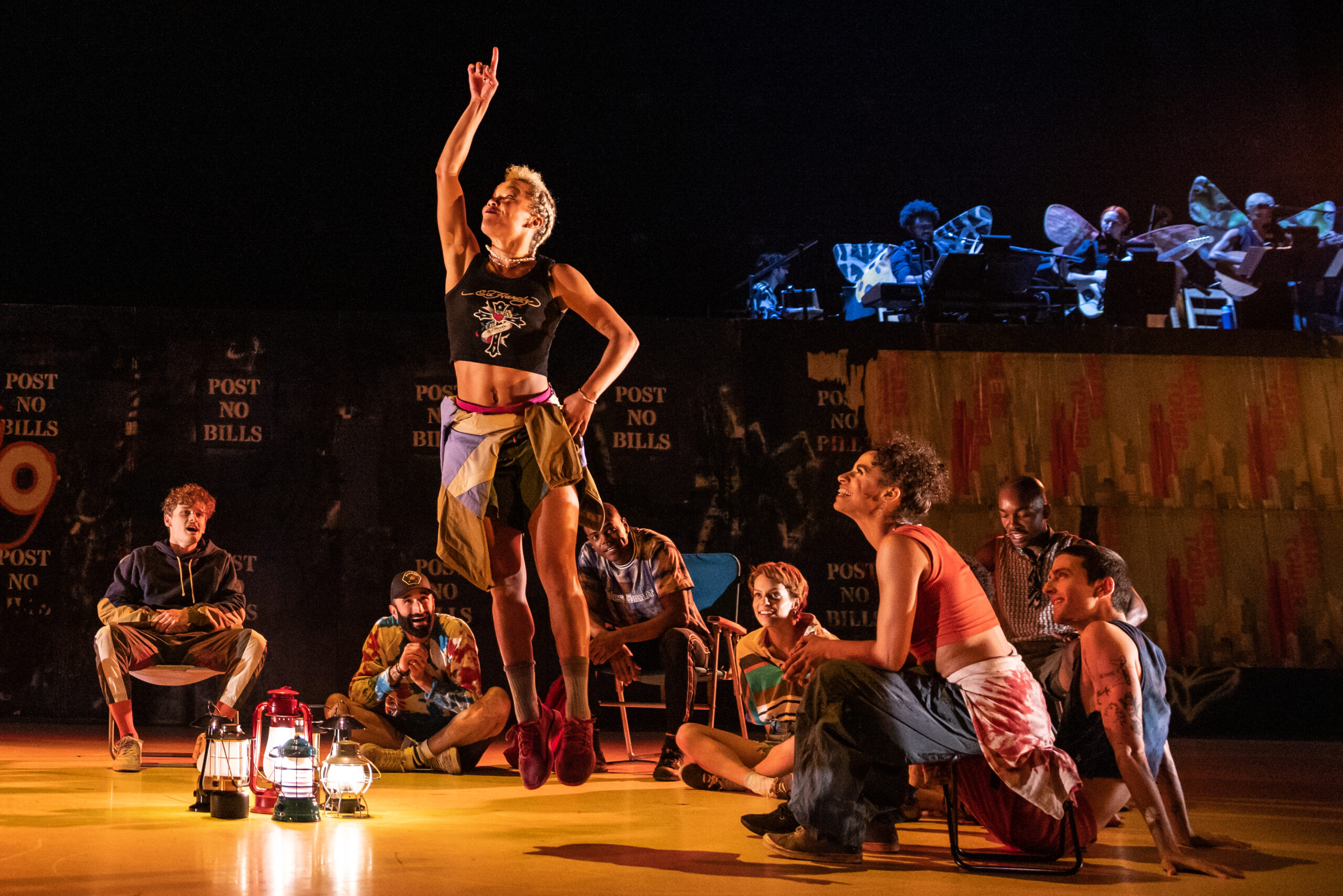Jeanette Delgado on the Making of Justin Peck’s Illinoise
There has been an excited buzz around Illinoise from the show’s earliest days. A collaboration between Tony Award–winning choreographer Justin Peck, Pulitzer Prize–winning playwright Jackie Sibblies Drury, and Grammy- and Academy Award–nominated songwriter Sufjan Stevens, the much-anticipated production—which had a preliminary run at Bard College’s Fisher Center last summer—seems to defy classification. It transforms Stevens’ beloved 2005 concept album Illinois into an unconventional musical featuring a live band, virtuosic singers, and a cast of A-list dancers from an array of stylistic backgrounds.
Jeanette Delgado, the former Miami City Ballet principal who has become one of Peck’s frequent collaborators, sat down to discuss the making of this one-of-a-kind show ahead of its upcoming performances at the Chicago Shakespeare Theater (January 28–February 18) and New York City’s Park Avenue Armory (March 2–23).
What has it been like working with such a diverse group of collaborators?
In the beginning, Justin had a loose idea for the storyline and characters. He assembled a small group of 12 performers, taking care to bring together dancers who specialize in different styles, since the music is so genre-defying. After creating some movement, he brought in Jackie Sibblies Drury to expand and solidify the storyline.
There are a lot of songs that deal with complex, layered issues. Justin wanted to work with people who could be a voice for those nuanced subjects. One of those people is our associate choreographer, Adriana Pierce, who is a queer woman. Another is the talented Timo Andres, who arranged Sufjan’s album for our musicians.
Sufjan’s album uses a lot of imagery and metaphor: UFOs, predatory wasps, politicians, zombies. How much of that does the show reflect?
It’s a mix. The dancers are portraying hikers gathering around a campfire to share stories. Some parts will take you away into a more abstract world, while others are more literal explorations of historical figures and events. Because some of the songs deal with dark, difficult themes, the tone of vulnerability and connection is set early on in the show. There’s a real community, pulse, and joy to it, a sense of belonging.
The album also features a variety of musical genres. Are you changing dance styles often, or does it feel like one unified way of moving?
Justin has found a cohesive amalgamation of all of the styles that have inspired him over time. He has offered space for the artists to bring themselves to the work, so there are stylized details in specific gestures and movements, but it’s not limited to one genre. We are performing as humans—not fairies, or some other creature—so we have the freedom to move our bodies in the way that feels authentic to us.
You’ve worked with Justin a lot. How has the Illinoise process differed from that of other projects you’ve done together—particularly the Steven Spielberg film West Side Story?
Every time I have ever worked with Justin, there has been consistency in his process. He always comes in prepared with movement and so many ideas. He works quickly, with a bright energy and passion.
For West Side Story, because Justin worked so closely with Steven Spielberg, much of the composition and storyboarding had been laid out by them before we came in. For Illinoise, because it’s so rooted in storytelling, there’s a lot of attention paid to how we guide the audience with our focus. That part has evolved in each iteration of the staging, and it’s been really collaborative.
You’ve had an unusual professional path. Could you share some of the “whys” behind your career transitions?
There are many factors that go into the decision to change course. Looking back, there were so many things that I’d always had a passion for: other dance styles, acting. I had to put those things to the side because ballet was such an all-encompassing career. But with time, I started to feel those other things calling to me.
Hard, unexpected things happened, but they gave me the courage to step outside of my comfort zone. Illinoise is such a departure from ballet that it feels challenging and exciting the way ballet did at the beginning of my career. It’s scary, but so rewarding.




